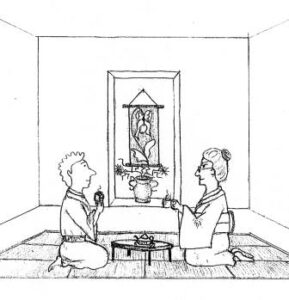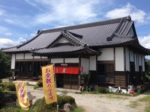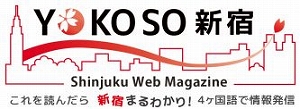- Home
- co-life新着情報
- Episode 2: What is a Multicultural Co-living House?
Episode 2: What is a Multicultural Co-living House?
- 2023/5/12
- co-life新着情報

“I saw a newspaper article that asked if it’s really possible to rent out a facility, even if it’s old and shared. They also asked who would be interested in such a place. Since our company transformed a run-down apartment that had no tenants into the popular “J&F House No. 1,” which now attracts a lot of attention as a foreigner-friendly accommodation facility, our office has been bombarded with phone calls like these all morning.
The term “foreigner house” refers to an apartment rental format that began in Tokyo in the 1980s when the number of foreigners in Japan started to increase significantly (the number of registered foreigners in 1980 was 780,000). It involves opening up vacant rooms in a homeowner’s house to foreign residents who are struggling to find accommodation in Tokyo, or renting out a detached house that was originally used as a student dormitory by a Japanese language school to foreign residents, not just students.
For foreigners, the deposit and key money required for renting a regular apartment in Japan is a huge financial burden. Furthermore, it is extremely difficult for them to find a Japanese person who is willing to act as a guarantor for them. Due to the background of that era, where foreigners were often refused entry based solely on their nationality, a foreigner house that doesn’t require key money or a guarantor became an economically viable and convenient option.
Now, J&F House No. 1, located in the northern part of Tokyo, is an apartment building that has been repurposed as a foreigner house. It was originally built over 40 years ago and was scheduled to be rebuilt, but instead, it was refurbished and turned into a foreigner-friendly accommodation facility. When you enter through the shared entrance and walk down the creaky hallway, you’ll find shared facilities such as toilets, a laundry room, a shower room, and a kitchen-living room, which is a common space for everyone.
Each room has no special amenities other than air conditioning, and the room sizes are not very large, ranging from 4.5 to 6 tatami mats. However, the rooms are equipped with bedding and lighting, so you can start living there with just one suitcase. The shared living room has a large TV, a computer, a refrigerator, a microwave, and cookig utensils, which are all very convenient.
In a way, foreigner houses can be considered a global standard for rental housing.”
(In the last paragraph, there was a note about discussing J&F House No. 1 and J&F House Juso in the next column.)












